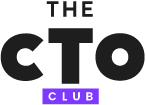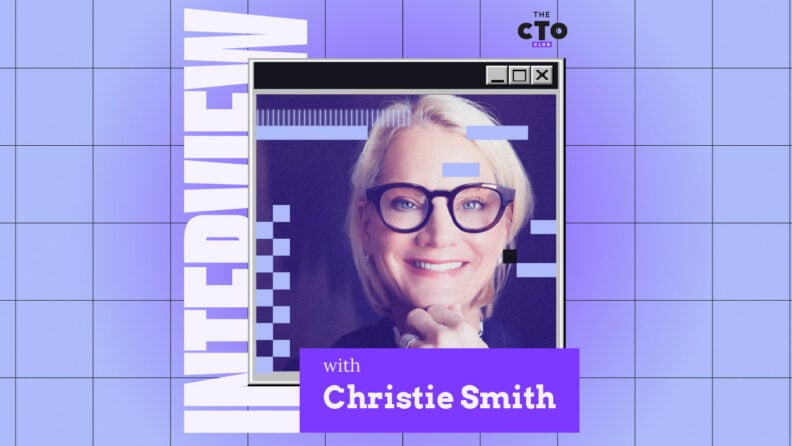In a world dominated by AI and automation, how do leaders maintain authentic human connection while embracing the push for efficiency?
In this Q&A, Christie Smith, Ph.D., founder of The Humanity Studio and co-author of Essential: How Distributed Teams, Generative AI, and Global Shifts Are Creating a New Human-Powered Leadership, shares her insights on balancing technology and human intelligence, overcoming outdated leadership practices, and navigating the challenges of today’s evolving workforce. Reflecting her unique vantage point as a ‘Gen Z mind in a Baby Boomer body,’ Dr. Smith challenges conventional norms to pave the way for human-centric, future-ready leadership.
Smith offers a fresh perspective on what truly drives high-performing teams in a rapidly changing business environment—one where leadership is redefined not just by what we do but how we do it.
Why Connection Still Counts
1. With so much emphasis on AI and automation, how do leaders balance the push for efficiency with the need for deeper human connection? Is there a risk of trading meaningful engagement for productivity gains?
AI and automation undoubtedly drive efficiency, but human connection remains vital for creating meaningful, impactful work. In fast-evolving sectors like tech, where the pressure to streamline can overshadow human engagement, this balance is crucial.
Technology and human intelligence are complementary—AI can streamline processes and elevate productivity, but human insight and judgment are essential for sustained performance and innovation. Leaders should view technology as an enabler, not a replacement for human intelligence; instead, it should create more space for team collaboration, open communication, and creativity.
By investing in connection and building trust, leaders cultivate engaged, high-performing teams that achieve outcomes AI alone can’t replicate.
Breaking Free from ‘Command-and-Control’: The High Cost of Holding On
2. Which leadership practices should have 'died' long ago, and why do they persist despite their flaws?
In my view, outdated practices like “command and control” leadership should have been retired years ago. This model assumes that employees need constant oversight, but it ultimately stifles motivation, creativity, and the engagement necessary for real innovation.
An engaged workforce has four fundamental human requirements: purpose, agency, well-being, and connection. Command-and-control leadership is diametrically opposed to these needs, yet it persists because it offers leaders an illusion of control—one that’s actually costly to morale and productivity. The leaders who succeed today facilitate rather than dictate, cultivating environments of trust, autonomy, and respect that empower their teams to do their best work.
Addressing the Deeper Needs Behind Talent Scarcity
3. In light of the “Great Skills Renaissance,” do you believe the focus on skills alone is enough to address talent scarcity, or is there a deeper issue with how we define and develop talent?
The “Great Skills Renaissance” has prompted organizations to rethink talent, but skills alone won’t solve the deeper issues behind today’s talent scarcity. In the tech industry especially, the “half-life” of skills is shrinking, with emerging technologies rapidly outpacing the relevancy of yesterday’s expertise. Demographic shifts, changing workforce expectations, and outdated definitions of talent all contribute to this scarcity.
It’s not enough to focus on technical skills; leaders must also consider how we engage our workforce around the human requirements I discussed earlier—purpose, agency, well-being, and connection.
Without this broader focus, we risk creating a workforce that’s technically proficient but ultimately unfulfilled and disengaged. Leaders today must expand their view of talent to encompass not only skills but also the conditions that help people grow, stay engaged, and remain resilient in a rapidly evolving world. Only then can we build teams that are ready for the future.
Return-to-Office Mandates Reveal Outdated Leadership Mindsets
4. Leaders are often praised for their innovation and forward-thinking, but do you think a 'failure of imagination' happens with today’s return-to-office mandates? What does this resistance to flexibility say about the current state of leadership?
Today’s resistance to flexibility reflects a lack of imagination about how work can be done. Insisting on a full return-to-office model often signals a reluctance to trust employees or to let go of traditional management mindsets—and no data is showing that being in an office five days a week enhances engagement or business outcomes.
Tech companies that pioneered hybrid work models have shown how flexibility can drive productivity and attract top talent, creating an adaptable, resilient culture. Leaders should embrace flexibility as a strategic lever that meets the evolving needs of their workforce, fostering a healthier, more adaptable, and—yes—more productive culture.
The future of work is here; leaders must now consider how to support the flow of work within their organizations to unlock its full potential.
Building Emotional Maturity in Endurance-Focused Environments
5. Many organizations champion emotional intelligence as a valuable trait, yet high-stress work environments seem to reward other qualities. How can leaders genuinely cultivate emotional maturity in workplaces that value endurance over empathy?
Emotional maturity is the next step beyond emotional intelligence—it’s what allows leaders to create genuinely connected, resilient workplaces. While emotional intelligence focuses on self-awareness, emotional maturity is about suspending self-interest to meet people where they are and appreciate the full context of their experiences.
Leaders cultivate emotional maturity by modeling vulnerability, showing curiosity about the humanity within their organization, and making it a priority to create psychologically safe spaces. When team members feel genuinely seen, heard, and supported, they bring their best, even in high-stress environments.
Leaders who build these relationships don’t just foster engagement; they create teams that are grounded, adaptable, and ready to face challenges together.
Rethinking Leadership to Rival Independent Work
6. The independent workforce has reached record numbers. Do you see this as an indictment of traditional employment models? What shifts must happen in leadership to make full-time roles as appealing as freelancing?
The rise of freelancing signals that traditional employment models are falling short, especially in meeting people’s needs for autonomy, flexibility, and purpose. To make full-time roles competitive, leaders must reimagine these positions not as static jobs but as dynamic paths that align with employees’ evolving career aspirations, values, and life circumstances.
In tech, where highly skilled workers are increasingly drawn to the freedom of contract roles, companies that prioritize genuine flexibility and personal growth find it easier to attract and retain top talent. This means offering meaningful growth opportunities and leading with integrity around core values. Leaders who invest in understanding the motivations of their people—and who design roles that can adapt to those motivations—can make full-time work just as fulfilling as freelancing.
These shifts are essential for any organization that aims to retain top talent in today’s rapidly shifting landscape.
A 'Gen Z Mind' in a Boomer Body
7. How do you see generational perspectives, like your own “Gen Z mind in a Baby Boomer body,” reshaping leadership mindsets? Are there specific 'old-school' ideas that don’t work with today’s workforce?
Whenever a new generation enters the workforce, there’s often a cycle of judgment: younger employees get labeled as entitled, while older ones are seen as inflexible. But I see it differently.
Each generation brings essential strengths, and today’s workforce—especially Gen Z—has a lot to teach us about the importance of purpose, values, and flexibility as foundational for engagement. Recent studies show that a majority of Gen Z workers prioritize purpose and well-being over salary alone, and this shift is transforming what people expect from leadership.
For me, having a “Gen Z mind in a Baby Boomer body” means embracing agility, authentic connection, and openness. Old-school beliefs that rigid structures and hierarchies drive productivity no longer resonate—and data shows they don’t hold up.
What resonates today is empathy, adaptability, and a shared sense of purpose that unites people across generations, making work meaningful for everyone.
What’s Next
Christie Smith's vision for leadership in the 21st century is clear: it’s time to embrace a future where AI and automation enhance, not replace, human intelligence and connection. As the workforce shifts, with new expectations and work models emerging, leaders must adapt and foster environments that prioritize empathy, purpose, and autonomy.
In this new world of work, the leaders who succeed will be those who not only manage technology but also nurture the human potential within their teams—because, as Christie reminds us, the future of leadership is human-powered, and it’s more essential than ever.
Subscribe to The CTO Club’s newsletter for more leadership insights.



